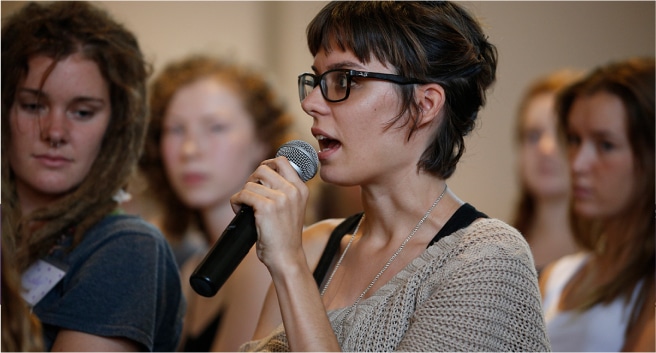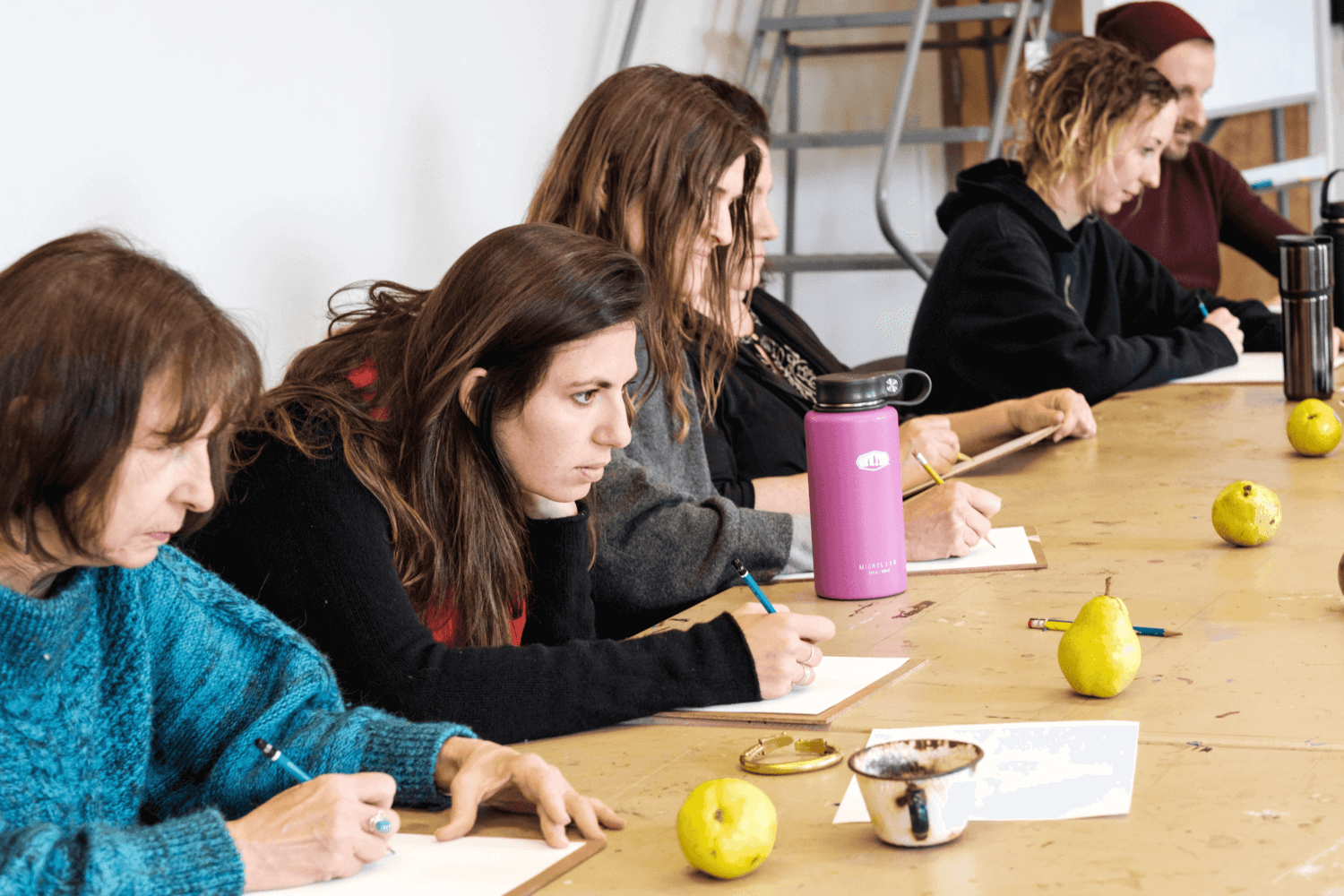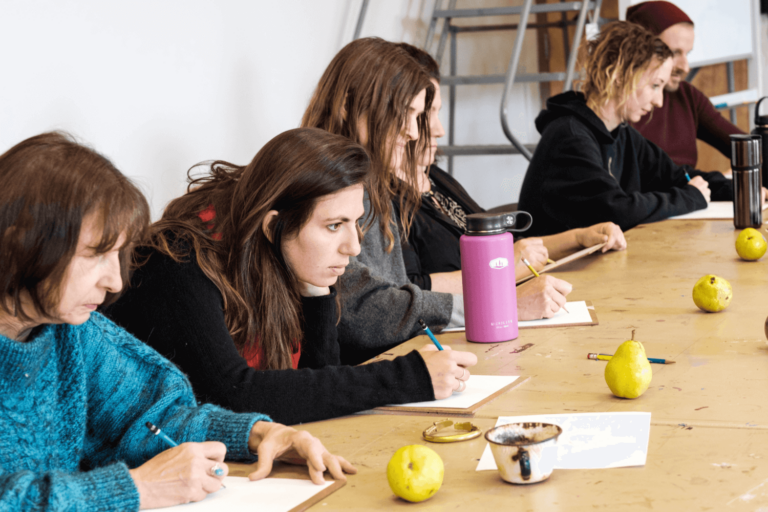BA in Visual Arts
Visual Arts Degree
Discover your artistic edge, cultivate a mindful art practice, and thrive with Naropa’s Visual Arts Degree.
Program Overview
The visual arts major transcends mere technique or style; it empowers students to merge inner creativity with external observation. Students gain confidence in their creative vision and the technical skill and critical thinking necessary to articulate that vision. Whether refining figure drawing, shaping clay on a pottery wheel, or crafting an artist statement, our students engage deeply with authenticity and introspection. The Visual Arts program offers a Bachelor’s Degree in Visual Arts, alongside minors and certificates in Visual Arts, a minor in Film and Media Studies, and a minor in Contemplative Art Therapy.
Contemplative Approach
Setting for Artistic Exploration
Recognized as one of the top Visual and Performing Arts Colleges in Colorado in 2020, Naropa boasts a rich tradition in fine arts. Our campus features four art galleries, a state-of-the-art 2D studio, a recording studio, an extensive art library, and dedicated spaces for pottery, sculpture, and media arts.
Community Support
Quick Facts
- On-campus degree program
- Ranked among the Best Visual and Performing Arts Colleges in Colorado in 2020
- Requires 36 credit hours out of 120 for a bachelor's degree
- Hosts four annual gallery exhibitions featuring international, national, and regional artists
- Culminates in a May graduation show
- Emphasizes contemplative practice
- Admissions open for 2025
Program Format
Naropa University’s undergraduate program spans four years, leading to a fully accredited Bachelor of Arts Degree. The Visual Arts Degree entails a 36-credit major with elective studios in diverse painting media, calligraphic forms, sculpture, pottery, and photography. Core courses encompass drawing, world art history, contemplative and studio practices, and professional readiness. Specialized mentoring in Advanced Studio Practice, Warrior Artist, and Portfolio and Gallery Presentation prepares students for their final project—an exhibition at the prestigious Nalanda Art Galleries, complete with a digital portfolio and artist statement.
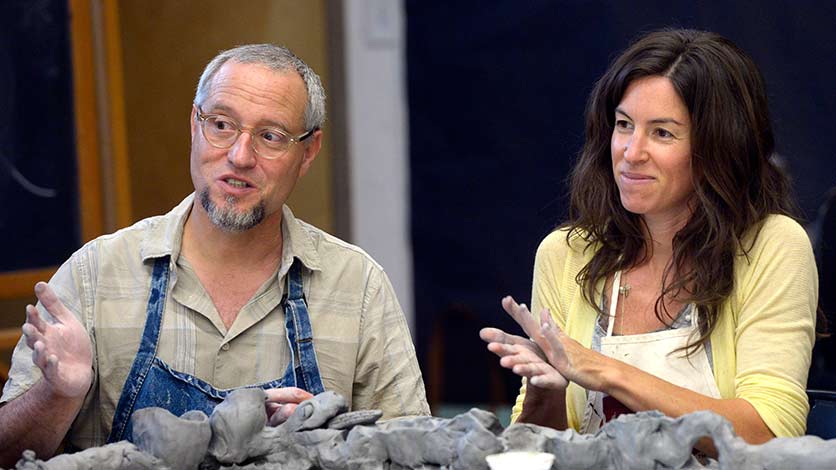
Course Spotlight
The Contemplative Artist
At the heart of the term “contemplative” lies the essence of observing and seeing. Originally associated with divination, it referred to an open space designated for observation. Contemplation involves a thoughtful and meditative form of observation. Through mindfulness meditation, studio assignments, and selected readings, students delve into the art’s cosmology, exploring its genesis, the intricacies of perception, cultural influences, and the convergence of the personal and public in an individual’s aesthetic sense.
Degree
Requirements
A Bachelor of Arts degree (120 credits) consists of a Core Curriculum (24 credits) and at least one major as well as minors and/or elective courses of the student’s choosing.
The Visual Arts Major has a total of 36 credit hours.
Visual Arts Degree Requirements
Gateway: 15 credits
- ART-101 2-D Design: Art Techniques and Experimentation (3)
- ART-125 Introduction to Drawing (3)
- ART-200 The Contemplative Artist (3)
- ART-301 Reconceptualizing Art History (3)
- ART-340 Contemporary Art History 1945 to Present (3)
Art Genres: Choose 12 credits
- ART-102 Contemplative Ceramics: Form and Human Contact (3)
- ART-105 Art and Consciousness: Mixed Media & Self-Exploration (3)
- ART-132 3-D Ephemeral Art (3)
- ART-155 Figure Drawing (3)
- ART-180 Sculpture (3)
- ART-215 Watercolor (3)
- ART-245 Introduction to Painting: Realism (3)
- ART-285 New Forms in Ceramics: Advanced Skills in Historical Clay Techniques (3)
- ART-311 Mixed Media (3)
- ART-325 Drawing II: Precision, Perception, and Form (3)
- ART-345 Painter’s Laboratory (3)
- ART-355 Eco-Art (3)
- ART-360 Contemplative Photography (3)
- ART-455 Making Conscious Media (3)
- ART-490 Special Topics in Visual Arts (3)
- ART-499 Independent Study: Visual Arts (0.5-4)
- TRA-120 Ikebana/Kado I (3)
- TRA-220 Ikebana/Kado II (3)
Milestone: 3 credits
- ART-385 Advanced Studio Practice (3)
Capstone: 6 credits
- ART-440 Warrior Artist: Risk and Revelation in Studio Art (3)
- COR-440 Capstone II (3)
Total: 36 credits
Why Choose Naropa?
Contemplative Education
A Naropa education diverges from conventional art schools by encouraging introspection and personal discovery of creative vision, complemented by mastering artistic techniques to manifest that vision.
Enriching Community
Your journey of artistic and personal growth is nurtured within a vibrant community of artists, performers, scholars, writers, and healers. Culminate your artistic evolution with the Portfolio & Gallery Presentation at Naropa Gallery, celebrating with your supportive arts community.
Scholarships and Financial Aid
Embracing cultural diversity, Naropa University offers scholarships and financial aid options, including student employment, to ensure accessibility for all undergraduate students.
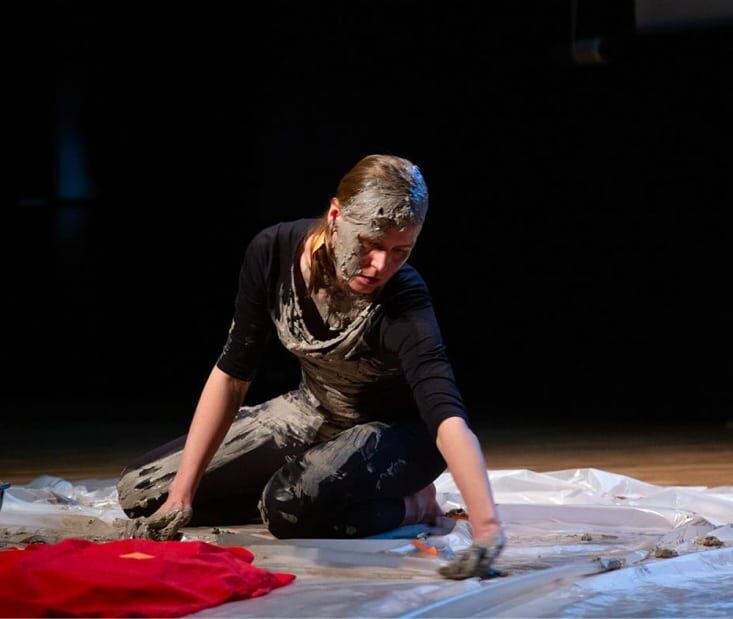
How this Program Prepares You
Introspective Approach
Careers in Visual Arts
Artistic Development
What You'll Learn
Mindfulness
Engage deeply with your art through mindfulness practices and self-exploration.
Artistic Community
Become part of a dynamic community of visual artists, writers, scholars, and thinkers.
Artist Portfolio
Curate a portfolio showcasing your most authentic and compelling work.
Fluency in Artistic Language
Develop the ability to articulate your artistic vision and the role of art in society.
Exhibition Experience
Present your artwork in prestigious exhibitions at the Naropa Gallery, alongside peers and mentors.
Career Opportunities with a Visual Arts Degree
Graduates of Naropa’s Visual Arts degree program continue to create and exhibit their art both regionally and nationally. Many alumni pursue advanced degrees in art, art therapy, and art history, while others embark on fulfilling careers as photographers, arts administrators, designers, entrepreneurs, art teachers, or professional exhibiting artists.
- Director: bring scripts to life.
- Photographer: create compelling visual stories.
- Art Director: shape captivating visual styles across diverse media.
- Musician: express emotions and stories through music.
- Special Effects Artist: enhance visuals for films and artistic projects.
- Craft Artist: create unique handmade objects with diverse materials and techniques.
- Graphic Designer: visually communicate ideas through effective designs.
- Talent Director: recruit and develop a team of individuals with exceptional abilities.
- Fine Artist: create expressive visual works using diverse mediums.
- Dancer: express emotions through skillful and expressive movement.
FAQS About the
BA in Visual Arts
What can you do with a visual arts degree?
A visual arts degree can open up several career paths in the creative and artistic fields. Some potential options may include professions such as visual artists, art critics, graphic designers, art directors, photographers, musicians, and fine artists, among others. With a Bachelor’s degree, you’re set for most entry-level positions. A Master’s degree in Visual Arts can launch you into specialized positions, research-oriented roles, or advanced academic pursuits.
Does a visual arts degree help with interior design?
Yes, you can be an interior designer with a visual arts degree. A visual art degree equips you with the essential creative groundwork necessary to excel as an interior designer, fostering a robust comprehension of vital design elements such as color and composition.
What is the difference between a visual art degree and other art degrees?
The difference between a visual art degree and other art degrees lies in its broad focus and specialization. While a visual arts degree encompasses various art disciplines, a fine arts degree centers on traditional artistic forms, a graphic design degree emphasizes visual communication, illustration degrees focus on creating visual narratives, and art history degrees delve into the historical and critical study of art. Each offers unique skills and perspectives for diverse career paths in the art world.
Learn More About the Program

Connect
with your counselor
Rachel Thompson
Assistant Director of Undergraduate Admissions
- 303-970-9831
- rachel.thompson@naropa.edu
- Schedule Appointment
Ready to Apply?
Admission Requirements
Undergraduate Students
- Students with a 3.0 GPA or Higher: Applicants with a strong academic record are welcome with minimal requirements.
- Students with Less than 3.0 GPA: If your academic performance hasn’t been as strong, but you aspire to benefit from a Naropa education and contribute to our community, we encourage you to submit your application.
- Transfer Students: Transfer 60 or more credits by presenting an official college transcript with your application.
- Learn more about requirements for first-time and transfer students on our undergraduate requirements page.
International Students
Costs and Financial Aid
Naropa supports students with generous scholarships, grants, and financial aid to embrace our contemplative educational approach. Use Naropa’s Net Price Calculator to estimate expenses and understand your financial commitment.
Undergraduate Scholarship Opportunities
